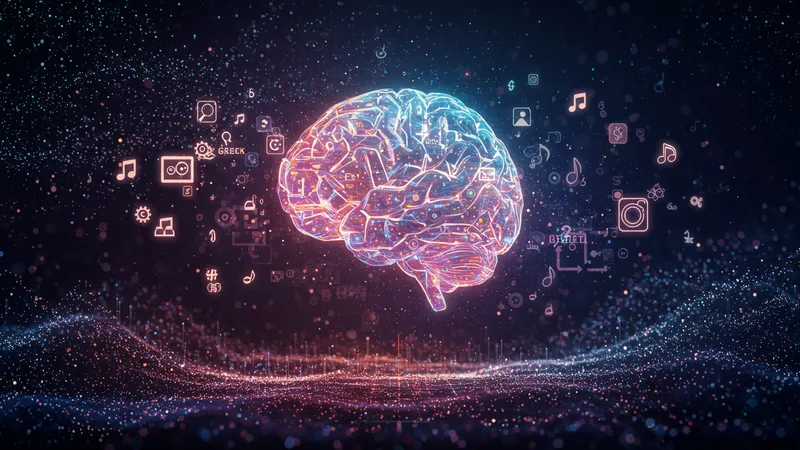

Generative artificial intelligence refers to a category of machine learning models capable of creating new content—such as text, images, music, and code—rather than simply analyzing existing data. These AI tools can discern patterns from data and use that knowledge to generate remarkably human-like responses or imaginative works. In recent years, the emergence of sophisticated frameworks and models has accelerated this technology’s ability to produce creative content, sparking transformative changes across digital industries, communication, and creativity.
What distinguishes generative AI from traditional predictive algorithms is its inherent ability to synthesize and craft content that did not previously exist. It uses deep neural networks, often based on transformative architectures like GPT (Generative Pre-trained Transformer), to mimic, extend, and sometimes even surpass human imagination. As a result, AI tools are fundamentally altering the landscape of creative production, business automation, and user interaction.

Generative AI technologies like ChatGPT have rapidly integrated into customer service, virtual assistance, and educational platforms, enabling businesses and individuals to automate conversation, draft textual documents, and accelerate research. These tools are trained on massive datasets and offer contextually adaptive responses that make digital interactions more seamless and intuitive compared to older models.
Google’s Gemini represents another leap forward, expanding the power of generative AI to not just text but multimodal content, including images and code. Enterprises utilize Gemini to summarize documents, analyze data, or generate creative visual assets, with flexible pricing reflecting different operational needs. The model’s integration with Google Cloud signals a shift in how organizations approach both automation and creativity at scale.
Open-source solutions like Stable Diffusion have democratized AI-powered image creation by allowing anyone with a capable computer to generate high-quality artwork or illustrations. Designers, marketers, and architects across industries are leveraging this tool for rapid prototyping, customized visuals, and even gaming content. The pace of iteration in this space means AI-generated visuals are now a regular part of digital content production pipelines.
These examples demonstrate that generative AI is more than a technical marvel—it is an evolving force that challenges creative boundaries, fosters innovation, and compels industries to rethink their approach to digital transformation. With new features, ethical considerations, and adoption trends emerging, the full implications are just beginning to unfold.
In summary, the world of generative AI and advanced AI tools is not only expanding the realm of what is possible, but also raising intriguing questions about creativity, authenticity, and the future relationship between humans and machines. The deeper details reveal even more valuable insights ahead—uncover how these technologies are redefining performance and user experience on the next page.
The current generation of generative AI models has achieved notable advancements in language understanding, content creation, and adaptability. ChatGPT, for instance, consistently scores high on standardized language comprehension benchmarks, demonstrating fluency in multiple languages and the ability to handle nuanced conversations. Gemini builds on this foundation, supporting not just text but also image and code understanding—enabling cross-modal workflows previously out of reach for many organizations.

Speed and efficiency improvements are evident in the latest versions of these tools. For example, ChatGPT Plus users can access faster response times and priority access during high-traffic periods. In creative industries, Stable Diffusion’s on-device deployment enables near-instantaneous image generation, which supports tasks like dynamic website development or real-time marketing content adaptation without latency bottlenecks. These improvements empower smaller teams to deliver complex projects with fewer resources.
Accuracy and precision are equally important aspects shaping user trust in generative AI. Both Gemini and ChatGPT deploy robust moderation systems to reduce content errors and mitigate inappropriate outputs. Stable Diffusion’s models can be fine-tuned for industry-specific requirements, ensuring that generated visuals align closely with brand guidelines and project briefs. These capabilities are instrumental in fostering broader adoption within business, education, and creative sectors.
Despite the impressive power of these models, ongoing research continues to address their limitations, such as handling ambiguity and preventing misinformation. Developers and companies invest in safety training, user feedback integration, and transparent update cycles. As generative AI toolkits become more accessible through APIs and public interfaces, users gain customized functionalities adaptable to niche requirements. These trends point to a near future where generative AI is seamlessly woven into daily workflows, making advanced technology accessible to a wider audience.
The core features of leading generative AI tools are tailored to a range of creative and analytical applications. ChatGPT delivers conversational adaptability, long-form text composition, and knowledge recall across a variety of domains. Integration with plugins and third-party applications extends its utility into scheduling, coding assistance, and even simple data analytics via natural language queries.

Gemini distinguishes itself with its multimodal capabilities—users can input a combination of text directions, images, or snippets of code and receive contextually complete responses. This positions Gemini as especially helpful in fields like scientific research, engineering, and software development, where complex, multifaceted queries are commonplace. Its customizable API structure allows enterprise customers to fine-tune model behavior according to organizational standards.
Stable Diffusion has gained attention for its ease of integration into creative pipelines. Artists and designers use the tool to transform written prompts into unique imagery or generate multiple design iterations rapidly. The open-source nature of Stable Diffusion encourages a large developer community, resulting in a steady pipeline of feature additions and creative plug-ins that further expand functionality beyond out-of-the-box capabilities.
In real-world scenarios, the seamless export and integration options of these tools with popular productivity and design platforms remove barriers to adoption. Automation of mundane tasks and augmentation of creative brainstorming are now within reach of individual users and teams alike, reshaping how content is conceptualized and produced. As these platforms continue to evolve, they enable more sophisticated features—such as advanced style controls for images or nuanced understanding of context in conversations—dramatically expanding their usefulness across professional settings.
Generative AI has experienced substantial adoption in sectors like marketing, design, customer support, and software development. Organizations increasingly deploy ChatGPT to handle basic inquiries, streamline repetitive documentation, or assist with market research, freeing up human talent for more strategic work. Real estate, publishing, and legal industries have begun implementing generative text to draft reports or summarize complex materials efficiently.

Gemini’s multimodal approach finds strong resonance in sectors requiring cross-data synthesis, such as finance, science, and engineering. Financial analysts employ its analytical capabilities to assess market reports by merging textual and graphical information. Engineering teams use its code understanding feature to automate code review processes, accelerating development timelines and reducing manual overhead.
Stable Diffusion empowers the creative sector by redefining how concept art, advertisements, and multimedia experiences are generated. Agencies utilize its open-source framework not only to design promotional materials, but also to customize visual outputs based on targeted campaign parameters. This has radically changed how design teams operate under tight deadlines or with limited image libraries at their disposal.
The rapid pace at which generative AI tools are being adopted signals a broader shift toward intelligent automation and creativity augmentation. User feedback loops and enterprise partnerships are accelerating new feature rollouts, ensuring platforms remain responsive to market demands. Given these developments, organizations that invest early in generative AI are positioned to strengthen their competitive edge, while users gain unprecedented creative flexibility and productivity enhancements.
The continuing development of generative AI models carries profound implications for ethics, creativity, and the future of technology. As these tools advance, questions about intellectual property, authorship, and originality gain increased prominence. Artists, writers, and software developers alike are navigating new territory as AI-generated content becomes commonplace, necessitating clearer frameworks for attribution and use rights.

Another central concern is the potential for bias and unintended consequences in generative outputs. Model training data, often harvested from broad and sometimes skewed datasets, can inadvertently perpetuate stereotypes or produce unfair results. Industry leaders are responding by implementing robust auditing systems, expanding diversity in training data, and inviting public scrutiny to ensure greater transparency and responsibility in AI development.
Looking ahead, the intersection of generative AI with emerging technologies—such as blockchain for provenance tracking, or edge computing for privacy-focused applications—will redefine both the creative process and digital security. Open-source initiatives like Stable Diffusion encourage innovation and accountability, while enterprise solutions like Gemini and ChatGPT are tasked with maintaining ethical standards as adoption widens.
As generative AI tools continue maturing, their impact will be measured not just by technical sophistication but also by their contributions to creative growth, fair representation, and responsible innovation. The journey from powerful algorithms to meaningful societal benefits relies on a balanced approach that fosters progress while respecting ethical boundaries—ensuring generative AI remains a catalyst for positive transformation.